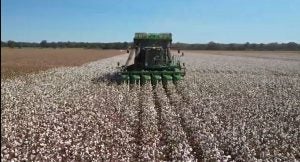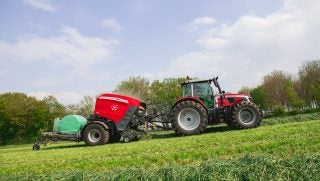Ag sustainability business Truterra has launched of four new data-driven regional and crop-specific programs to support farmers as they adopt more regenerative growing practices.
The offerings include a solution for long-term adopters, Truterra‘s first cotton-specific program, and the first nitrogen management program following a successful pilot.
In their announcement, Truterra did not explain how they define “regenerative,” a term has been divisive at times by virtue of not having a widely recognized definition by the government or any centralized certification entity. Largely speaking, it’s a focus on restoring soil health and reducing runoff, but how to achieve those improvements is interpreted differently by many producers and stakeholders. For example, differences involve how to implement cover crops and no-till, what kind of crop protection products are acceptable, and whether livestock is involved.
Truterra’s new 2023 sustainability programs include:
Field Data Management: Cotton (Tennessee)
Truterra’s Cotton Field Data Management program is available for eligible Tennessee farmers to enroll in the heart of the cotton belt.
In exchange for providing field management data and signing a one-year commitment, eligible farmers will receive compensation as well as exposure to the transformative power of data-driven agriculture.
This program provides a critical entry point for farmers at the start of their sustainability journeys, enabling them to try a sustainability program without agreeing to a long-term commitment.

This Week in Louisiana Agriculture
Field Data Management: Wheat (Ohio, Maryland, Kansas)
Truterra’s Wheat Field Data Management program is available to eligible farmers in Ohio, Maryland and Kansas at the start of their sustainability journeys, with wheat in rotation between 2018-2023.
As part of this flexible one-year commitment, eligible enrolled farmers may be compensated for providing field data management and receive insights for enrolled acres while building the baseline data required to potentially participate in future Truterra programs.
Supply Shed Benefits (Indiana)
This program offers a long-awaited solution for long-term adopters of sustainable practices.
Farmers in Indiana are eligible if they have implemented strip-till or no-till and/or added cover crops on fields with corn. The practice must be in place for crop year 2023, regardless of the date of practice change.
Eligible farmers who participate in the 2023 Truterra supply shed benefits program could potentially receive $5/acre while also building the baseline data required to potentially participate in future Truterra programs.
Nitrogen Management Incentive (Illinois)
Truterra’s Nitrogen Management Incentive is available for eligible farmers with corn fields in Illinois having met the qualifying practice changes.
This is the first nitrogen reduction incentive program for Truterra and completely independent of tillage reduction or addition of cover crops, which builds on Truterra’s purpose to meet the farmer where they’re at on their sustainability journey.
The program is designed to be flexible in how a farmer may be incentivized, with either the reduction of fertilizer and/or addition of stabilizer.
This program is targeting an important GHG that is more than 270x more potent than CO2.
“Everything Truterra does is with the farmer at the center, backed by the network of ag retailers they trust,” said Tom Ryan, president of Truterra. “Each of these programs is designed to support farmers as they adopt customized conservation management practices to help them make the best informed agronomic, economic and environmental decisions for their farms.”
Beyond these new programs, Truterra also offers a range of solutions for farmers, from a soil health assessment, which provides a comprehensive report with actionable insights for farmers to understand the biological, chemical and physical health of their fields, and then create a roadmap for improving their soil health, to our farmer-centric, retail-driven carbon program.


